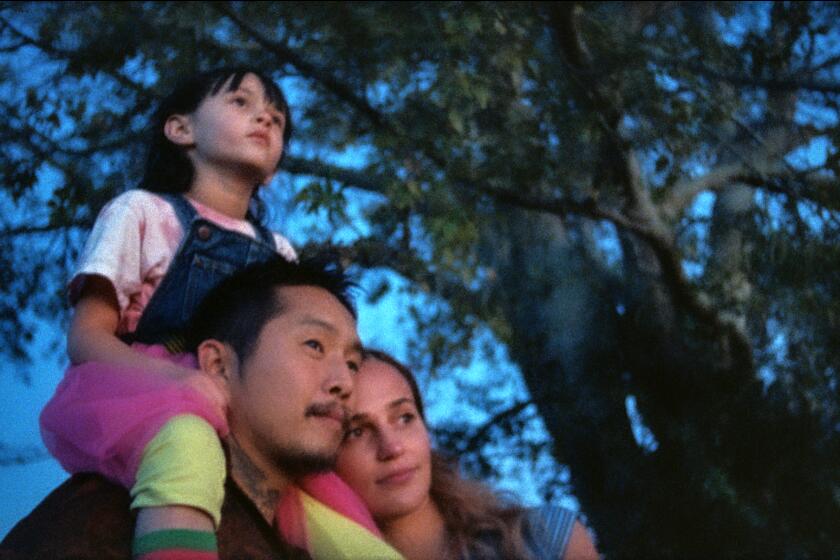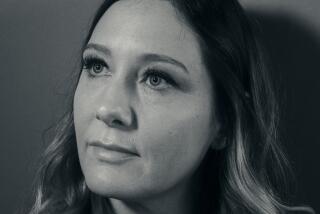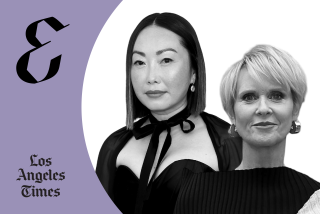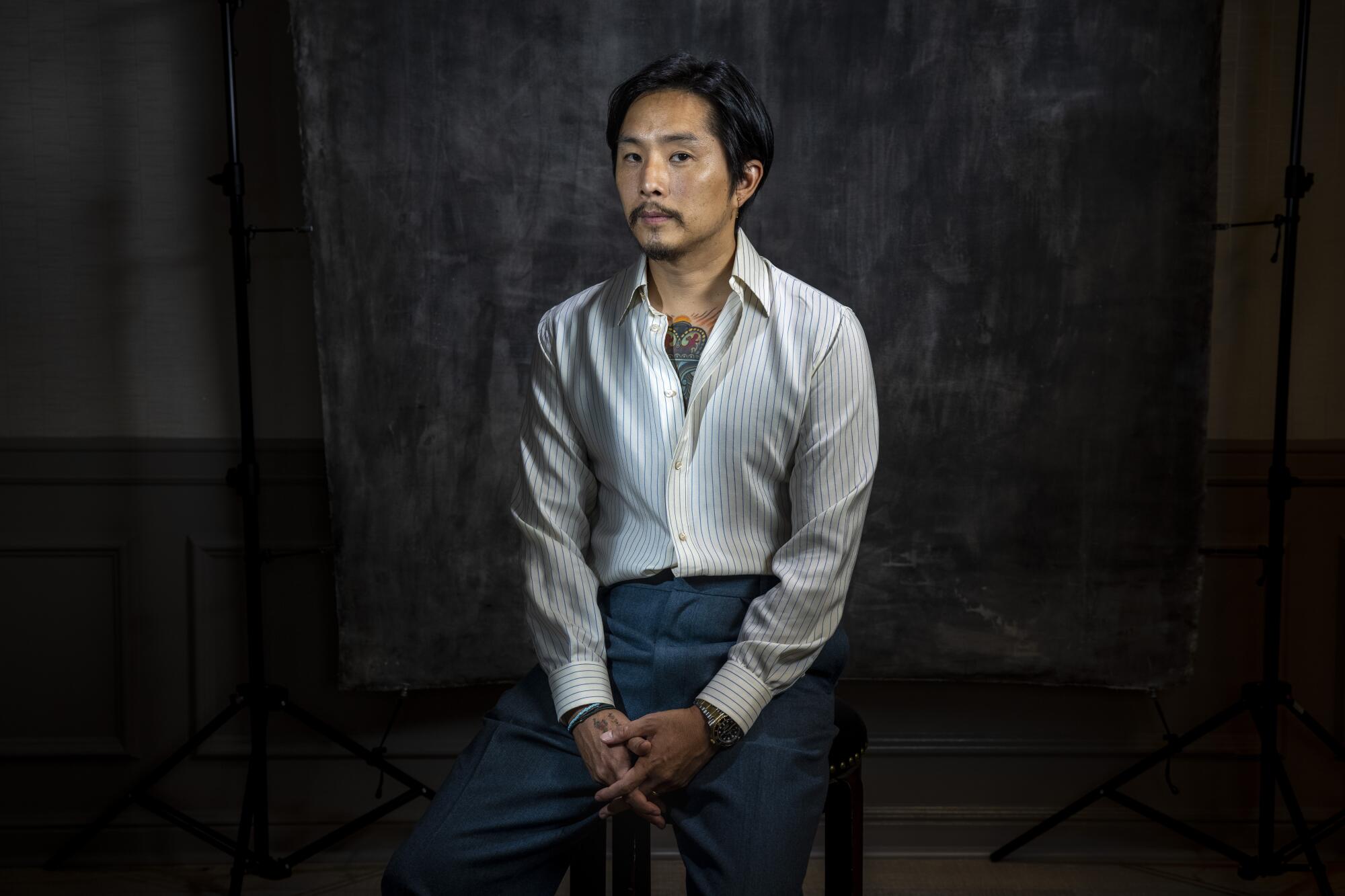
Five years ago, after completing his second film, âGook,â an intersectional revisiting of the 1992 Los Angeles riots, Justin Chon pondered what to pursue next. Thatâs when the American director of Korean descent became aware that international adoptees brought to this country by U.S. nationals were being deported given their lack of permanent status.
âI thought, âIâm sure they can clear it up because obviously theyâre adopted by U.S. citizens. It shouldnât be a big deal.â But then I found out that it didnât matter, they were using it as a loophole to deport them,â Chon told The Times. âMy heart bled for them. It must be absolutely painful to think that you were taken from the country you were born in, and then many years later, the country that you call home says that you donât belong.â
Upon researching the issue at length, Chon realized the situation had been ongoing for several administrations without resolution. Adoption didnât guarantee these individuals American citizenship, and now thousands find themselves in a legally vulnerable position.
Chonâs desire to elucidate this shocking injustice became the foundation for the directorâs latest work, âBlue Bayou,â which premiered at the Cannes Film Festival in July and is now playing in theaters nationwide. Based on that kernel of an idea, Macro, a production company whose mandate is to finance and produce stories told through a multicultural lens, came on board and commissioned him to write the screenplay.
âWe tend to get a lot of immigration stories with the usual narrative dealing with the border and Mexico,â said Poppy Hanks, Macroâs executive vice president of film production and development and a producer on the film. âThinking about what was happening at the time in the country, here was a way to tell this story that not only a lot of people didnât know about â so we could educate â but also in a way that was unusual.â
Justin Chon wrote, directed and starred in this uneven but devastating film about a Louisana man facing deportation from the only country heâs ever known.
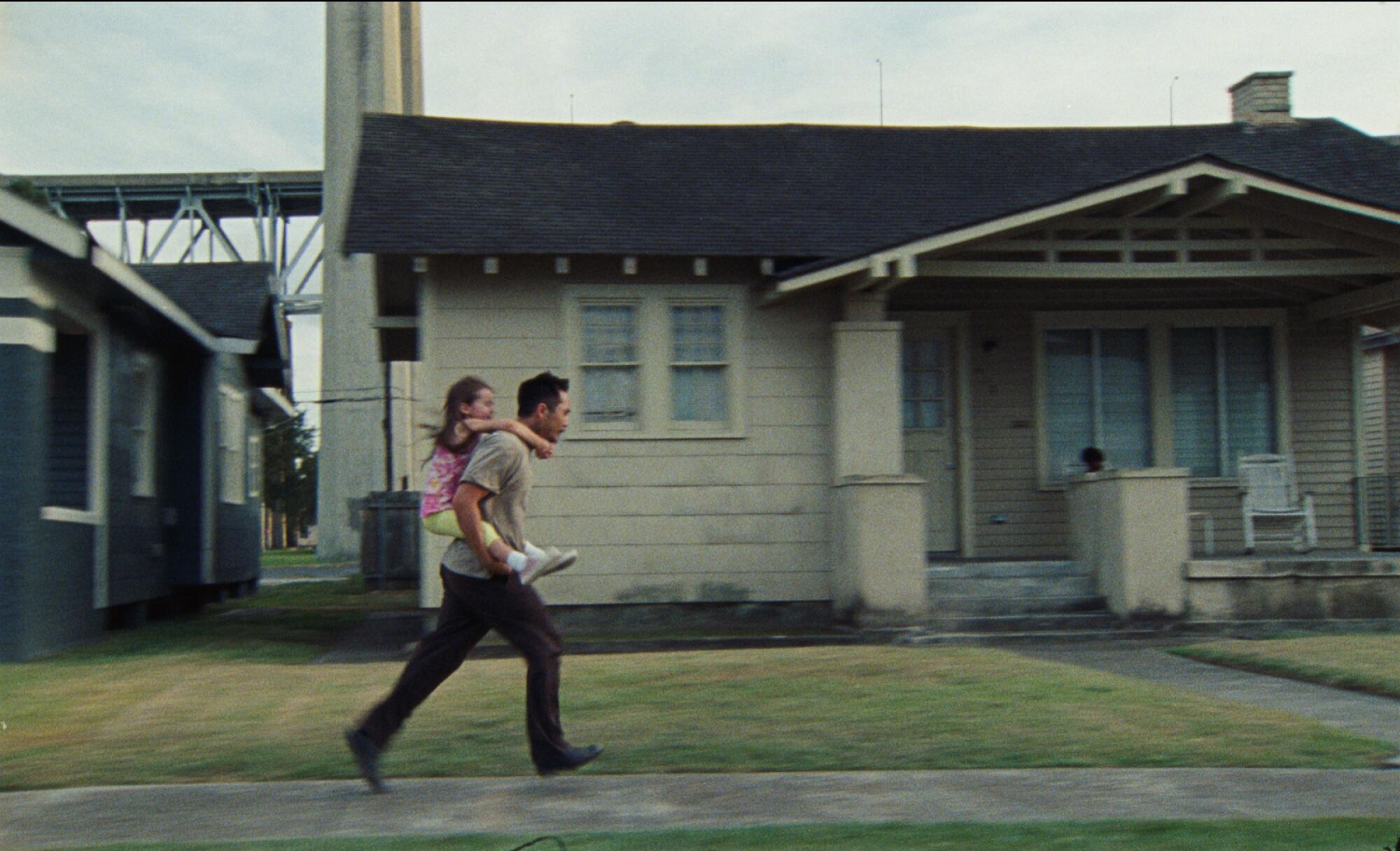
As Chon developed the project, he completed a third independent feature, âMs. Purple,â a portrait of a young Korean American karaoke hostess navigating family dynamics fraught with resentment, which premiered at the 2019 Sundance Film Festival and was released the same year.
Soon after that film opened, production began on âBlue Bayou,â the story of Antonio LeBlanc, a New Orleans man (played by Chon himself) adopted from South Korea by a white American couple as a child, now confronted with the possibility of forced repatriation to a land he barely remembers. A tattoo artist with a past of illicit activity, Antonio is a devoted stepfather to Jessie (Sydney Kowalske) and partner to longtime girlfriend Kathy (Alicia Vikander), pregnant with their child. Separation from his family is an unbearably nightmarish prospect.
There are several reasons why the Orange County native, whose previous two films made deliberate use of their Los Angeles settings, chose to center this story in Louisiana. âI had never seen an Asian American with a Southern accent played in a particularly significant way in film, and I also wanted to put it in New Orleans because itâs a very resilient city,â Chon said. âEven recently they dealt with a hurricane and they still find a way to keep their spirit alive. That really represented Antonio. Heâs a real three-dimensional human, not just some saint.â
Since the Vietnamese diaspora is the largest Asian population in Louisiana, comprising refugees relocated there in the aftermath of the Vietnam War and their American-born children and grandchildren, Chon opted to portray two distinct Asian ethnicities in the narrative. Antonio establishes a platonic bond with cancer patient Parker, played by Vietnamese-born French actress Linh Dan Pham (âIndochineâ).
âI had never seen an Asian American with a Southern accent played in a particularly significant way in film ... Heâs a real three-dimensional human, not just some saint.
— Justin Chon on his character in âBlue Bayouâ
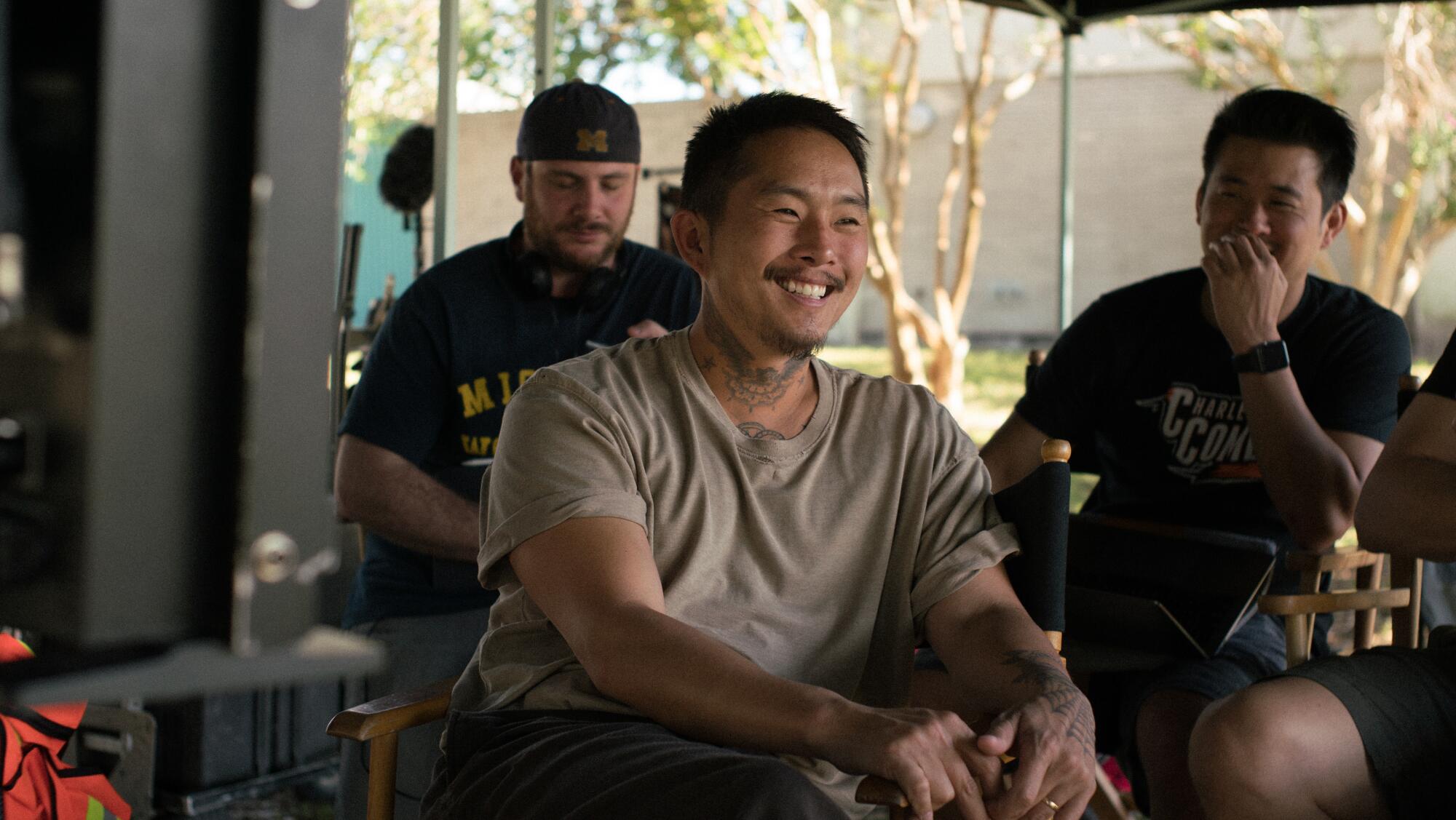
Location specificity aside, Chon focused particular attention on the proper depiction of the adoptee experience, specifically those of Asian heritage raised in white households. âI wanted for them to feel like they were represented correctly, so I had a lot of consultants and people who were a sounding board for me throughout the process of writing the film,â said Chon.
One of those voices was Julie Young, a former lawyer and founder of the Brooklyn-based TIDE Film Festival for underrepresented storytellers. She befriended Chon at the 40th annual Asian American International Film Festival, where she was asked to present him with an award. Subsequently, she became a trusted guide, sharing her worldview as an adoptee and connecting him with others in the adoptee community.
âThat night in my speech, I talked about the importance of representation and what would it have looked like if as an adoptee I had grown up seeing Korean adoptee stories or really any adoptee stories in the media â and the significance of Justinâs work, because heâs showing a side of Asian America thatâs not usually seen,â explained Young.
Through their conversations, Young recalled memories of growing up in a white family and in a suburban community, as well as the earth-shattering relevance of becoming a mother. âWhen I had my kids, I have twins, and I saw my son, the first words out of my mouth were, âHe looks like me,ââ she noted. âThis is a super significant thing â in my experience and a lot of my adoptive friends â because we grow up always wondering, âWho do we look like?ââ
Directly addressing this sentiment, âBlue Bayouâ features Antonio holding his newborn child for the first time, a moment that strongly resonated with Young. In turn, the film challenges some of what Young considers major misconceptions about adoption through Antonioâs estranged and traumatic relationship with his putative parents.
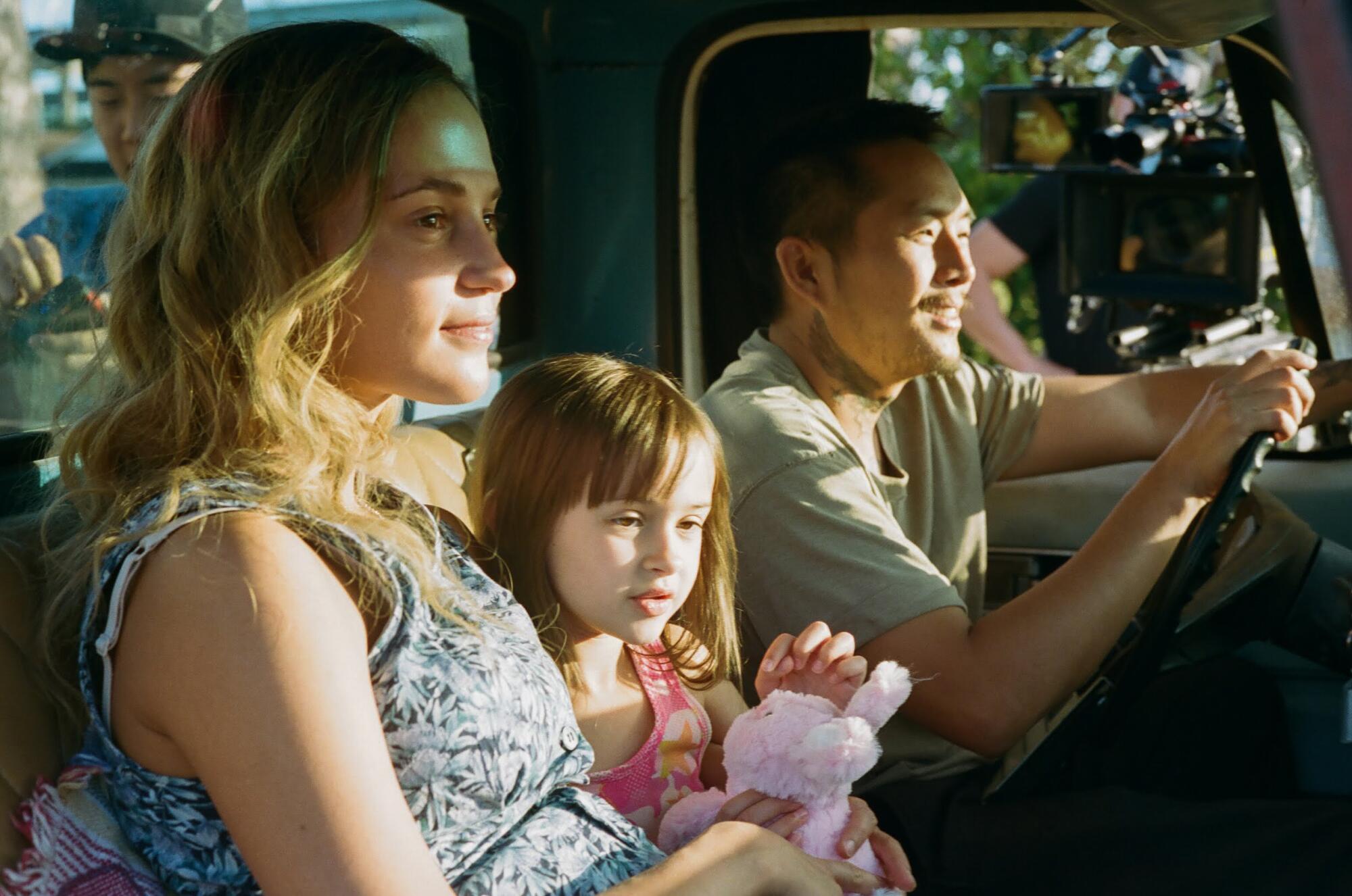
âWhatâs not understood is that love does not conquer all. People like to think of adoption through rose-colored glasses and that because this family loves this child â usually, not always â everythingâs going to be OK,â said Young. âParticularly with children of color in trans-racial adoptions, we need more than just love. We need recognition of who we are and where we come from.â
Those struggles with identity are implicit in âBlue Bayou,â beginning with the opening scene, which finds Antonio on a job interview where the manager asks about his ethnic background. For Chon, the static frame instantly introduces Antonio as a Southern man through his accent and his white stepdaughter, both aspects of his life that defy the limited, white-centric view of what an American family is. Chon himself has been subjected to such uncomfortable exchanges.
âWhen I go to Korea they donât consider me Korean, they consider me American. Yet when Iâm here in the United States, Iâm constantly asked that question, âWhere are you from?â Nobody ever just automatically assumes that youâre just an American and youâre born and raised here,â he recalled. âThey look at your face and they just make assumptions that youâre from somewhere else. I felt that many a time growing up in the United States.â
As a fan of Oscar-winning Swedish actress Alicia Vikander since her debut in the film âPure,â Chon envisioned her in the part of Kathy. As a Scandinavian playing an American, Chon believed that every one of her choices would be intentional, including her accent. He wrote her an impassioned letter that led to a video meeting. For the actress whose diverse credits include âTomb Raider,â âEx Machinaâ and the recent âThe Green Knight,â knowing Chon was seeing her in a different light was refreshing.
âIt was interesting because Iâve played British and a royal a few times early in my career, and most people wouldnât offer me this kind of role. For me it was a beautiful thing that Justin thought I was a very good fit,â said Vikander. âThis lower-middle class environment is where Iâm from myself. Yes, itâs another country, but in a way itâs probably closer to me than some of the other roles Iâve played in my life.â
Vikander, who as a child attended a school with Swedish classmates of Syrian, Iranian and Croatian origin, was appalled to learn of the adoptee deportations. âIt broke my heart to know that so many people have been put in situations where they are deported away from their homes, their families and children,â she said. âI grew up in a country that has quite a lot of refugees, and today there are even more people in need of a new home.â
Itâs very difficult for them to find words ... The song is a direct access for them to connect without words.
— Alicia Vikander on the filmâs use of music, including the song âBlue Bayouâ
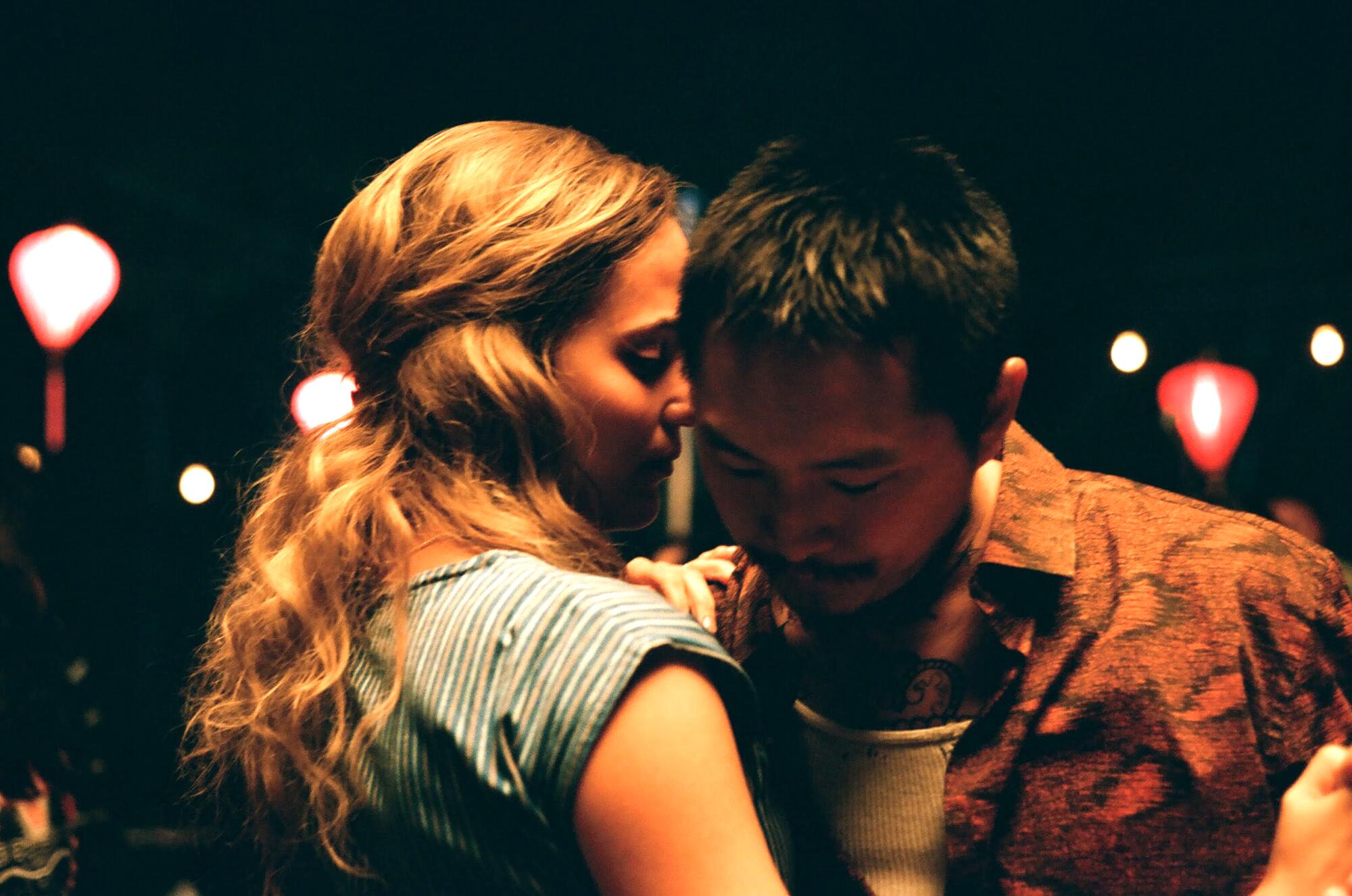
Working with a director who was also her co-star made âit even easier to find a language to communicate with,â the actress said. And midway through âBlue Bayou,â she found her favorite scene.
With the looming threat of involuntary removal in his mind, Antonio is invited to a party at Parkerâs home almost exclusively attended by her Vietnamese relatives and friends. Itâs the first time that he finds himself surrounded by other Asians, even if not precisely from his birthplace. With the crowdâs encouragement, Vikanderâs character takes the stage to sing âBlue Bayou,â a track originally sung by Roy Orbison and later Linda Ronstadt.
Though she admits to enjoying karaoke, Vikander is not a trained singer and had never sung on screen, but she understood the profound implications the lyrics had for this couple.
âItâs very difficult for them to find words, and then trying to connect to one another or handle their own anxieties and worries and sorrows,â Vikander explained. âThe song is a direct access for them to connect without words.â The event also reaffirms Antonioâs unvoiced yearning to reevaluate his uprooting â a need depicted throughout the film with magical realist underwater sequences that invoke an otherworldly atmosphere.
âItâs a scene where Antonio gets, for the first time, to really open up this door and reflect over another part of him, a heritage. Obviously, his home is in America and he is not defined by the place he was born in, but his mother is from [South Korea],â said Vikander. âAnd even though you find a new self in a new part of the world, thereâs still the curiosity to at least understand or know part of the history that you have, where you come from.â
Young also found a deeply personal connection to that sequence. âThe first time that happens for an Asian adoptee is significant. Thereâs a discomfort, yet thereâs also a recognition and a feeling of home at the same time. Justin shows that in how he plays Antonio in that scene,â she said. âAll of us adoptees that have gone into the discovery of our Asian identity have the memory of when that happened very present.â
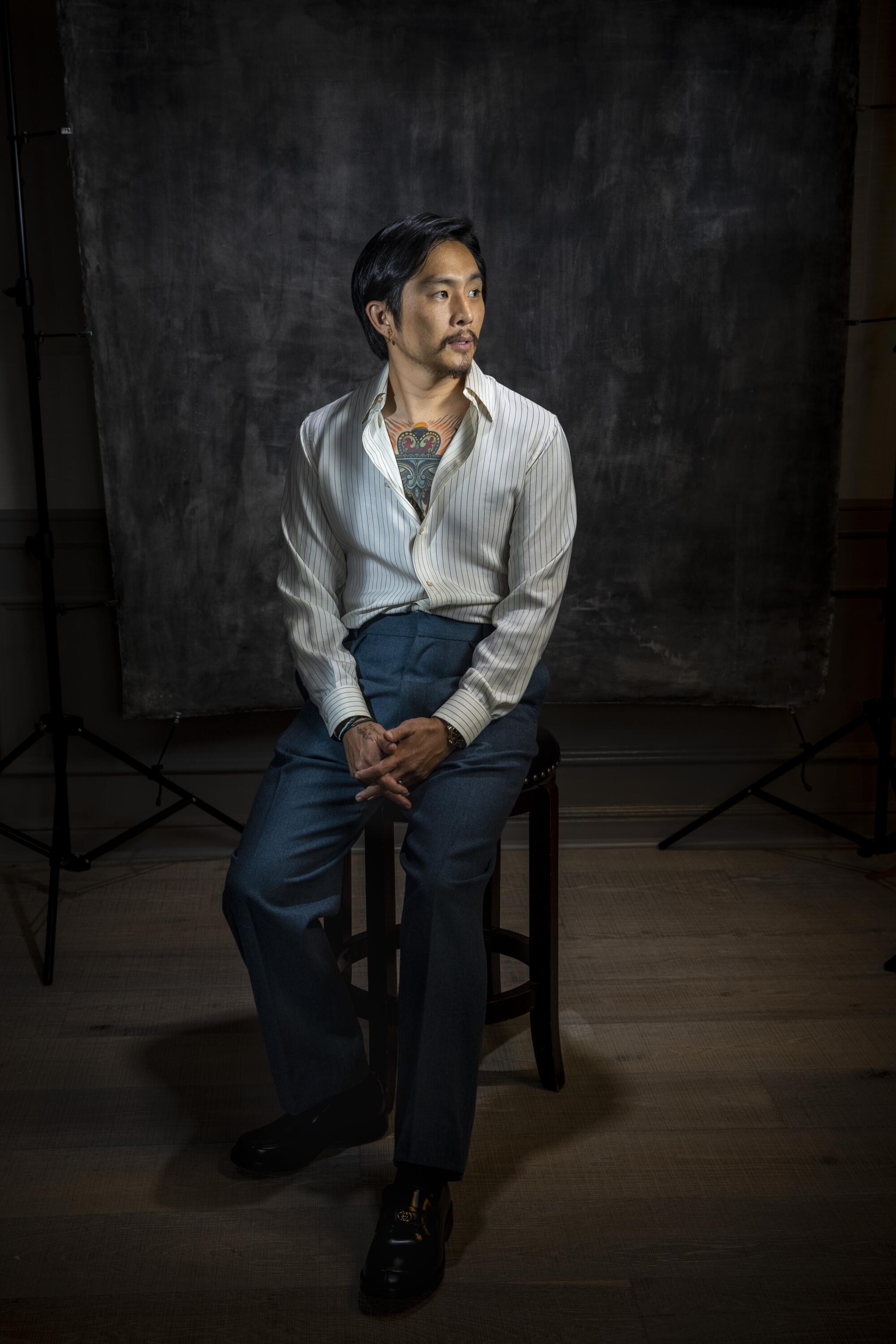
Key to the discovery is the character of Parker, not only because she offers Antonio a community but also because of her buoyancy in spite of her terminal illness. As a result of spending time with her, Antonio is more introspective about his devastating circumstances in relation to someone undergoing something even graver.
â[Parker] was meant to be a mirror to him, and also a motherly figure, a kind of mentor to guide him on his journey,â said Chon. âTheyâre both reaching a sort of a death, Antonioâs reaching a death as an American and sheâs reaching a physical death.â
For Chon, now with four features as a writer-director a decade away from his days as part of the âTwilightâ franchise cast, the impetus remains reframing cinemaâs still narrow vision of who gets to be an American on screen. And what that means.
âMy films have always been consistent in that Iâm trying to bring empathy to my community, to Asian Americans. All of them have that in them and they also have diversity, even within one minority group,â he said. âOne of my goals in filmmaking is showing how we can coexist in this country and how much weâre more alike than different. Thatâs what I aim to do in every film.â
More to Read
Only good movies
Get the Indie Focus newsletter, Mark Olsen's weekly guide to the world of cinema.
You may occasionally receive promotional content from the Los Angeles Times.
